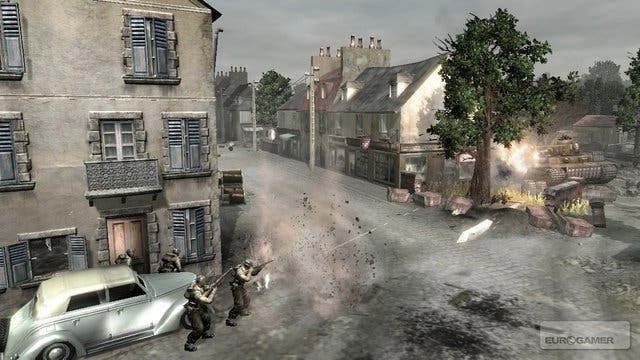Company of Heroes: Tales of Valor
Little bits of war.
Standalone expansion. Is it just me, or is that something of an oxymoron? How can you expand something if you don't even need to own the original thing in the first place? It's a particularly pertinent question as far as the new Company of Heroes disc is concerned, since this standalone package doesn't really offer much in the way of new content. It's clearly not a sequel, but then its slim pickings don't do all that much to expand the game either.
Company of Heroes, of course, was and still is absolutely ace, coaxing top marks from the mercurial Mr Gillen back in 2006. One of the finest RTS games of the last few years, it rose above the herd of similar World War 2 strategy titles and showed that veteran Canadian developer Relic wasn't about to live up to its name.
But when you've got a game that's been so universally acclaimed, where do you take it next? Keep churning out the same stuff and you risk familiarity curdling into contempt. Change things too much and you lose whatever it was that made people go gooey to start with. Fans of this meatiest of strategy challenges therefore can't help but have shivered a little when designer Chris Degnan told us that there was "a drive to make a more casual, friendly experience" for Tales of Valor. Has the 10/10 titan of wartime RTS fallen prey to the dreaded dumbing down?
Sort of.
Tales of Valor's curious construction makes it hard to really get a firm grasp on what its purpose is supposed to be. The core multiplayer component, the bit that made fans gasp and shriek with glee, is much as it's always been. The resource management, the base building, the push to capture strategic points and form supply lines through hostile territory. It's still here, it's still deadly serious, it's still at the mercy of the rather flaky Relic Online system, but at least they've not replaced anything with a quick time event. Phew.

So what, exactly, are you buying in Tales of Valor? "Three new single player campaigns!" shouts the instruction manual with boyish enthusiasm, but since each only features three missions, the word "campaign" seems an overstatement. Tiger Ace follows a single German Panzer crew as they help capture a French town. Causeway puts you in control of US troops in the hours following D-Day, battling to secure a vital bridge. Falaise Pocket casts you as a small Wehrmacht force, sent to aid German troops surrounded by the Allies.
Each is short but sweet, with a nice focus on the gritty, ground-level variables of the battlefield, but they're certainly not the sort of meaty challenges fans will expect. Gameplay has been pared back into something more akin to World in Conflict, although at times it can feel just as much like a hybrid strategy-action game like Syndicate Wars, as you're rarely controlling more than four or five units at a time. World in Conflict and Syndicate Wars are fine inspirations, of course, and there's no denying that it's exciting to take charge of single unique units and guide them from start to finish through a particular offensive, rather than churning dozens of anonymous clones out and lobbing them into action. It's fun, yes, but since it won't take more than a day to storm through their slender narratives, they hardly make for a compelling sales pitch.


